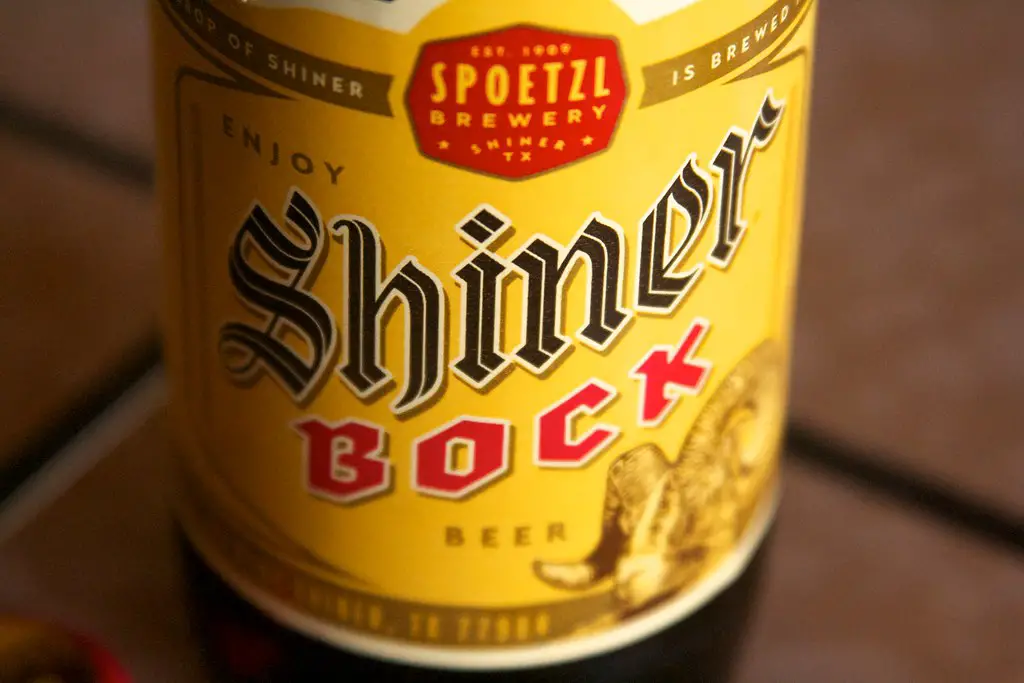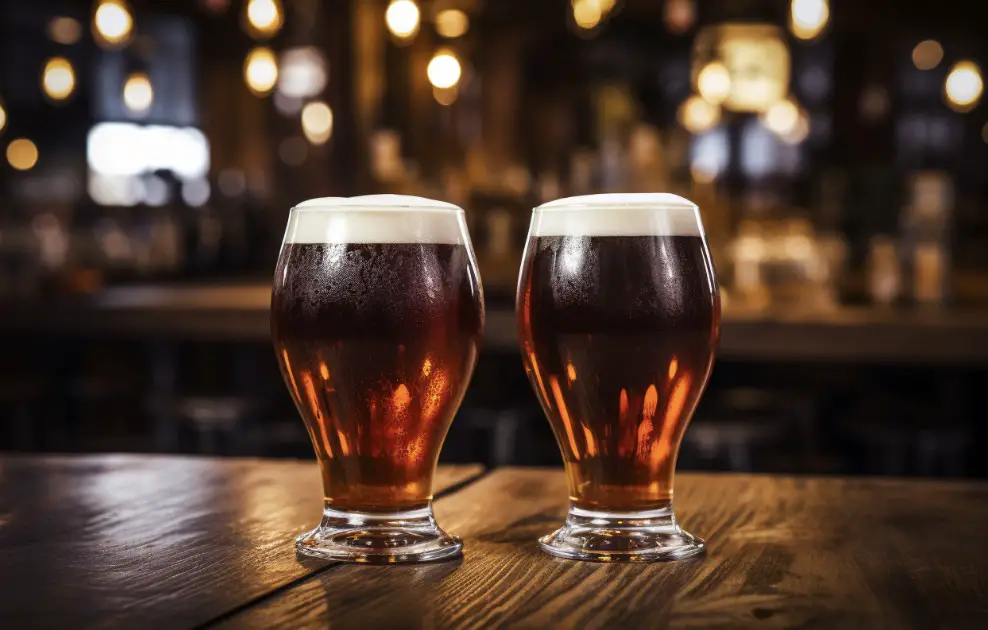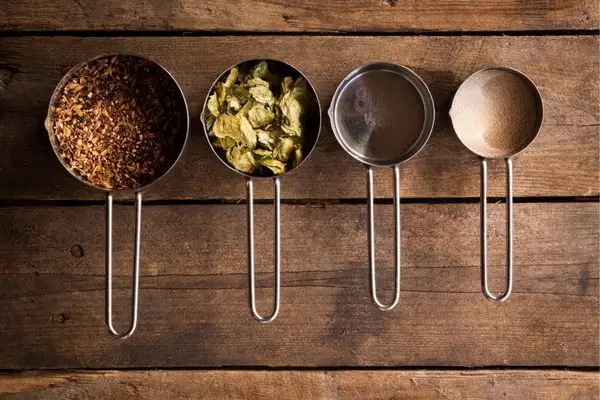Ah, the age-old debate among Texan beer enthusiasts: Shiner Bock vs. ZiegenBock. If you’ve spent even a short amount of time in the Lone Star state’s beer scene, you’ve no doubt come across this discussion.
The two bocks are quite similar and they both hold a place in the hearts of many, but which one truly reigns supreme?
Both are iconic beers of Texas, but if I had to choose, I’d give Shiner Bock a slight edge for its rich history and slightly smoother taste.
Sit with me for a moment, crack open a cold one, and let’s dive into the intricacies of these two legendary brews!
Historical Background
Shiner Bock
Founded in 1909 in the small town of Shiner, Texas, the Spoetzl Brewery has been churning out Shiner Bock for over a century. Originally crafted as a seasonal beer for Lent, it became so popular that by the 1970s, it became a year-round offering. It’s deeply rooted in Texan tradition, and it’s more than just a beer; for many, it’s a symbol of the state itself.

ZiegenBock
Though it might not have the century-long legacy of Shiner, ZiegenBock, introduced in 1995, was Anheuser-Busch’s answer to the increasing demand for amber beers in Texas. It’s a beer made for Texans by a large brewery, but it was crafted with care, precision, and a touch of Texan spirit. Despite being the younger contender, it’s gained quite the following.
Brewing Methods & Ingredient Differences: Shiner Bock vs. ZiegenBock
The art of brewing beer is an ancient craft, and while many beers may seem similar at face value, differences in ingredients, brewing methods, and brewing ethos can bring about vastly different flavors and profiles. Shiner Bock and ZiegenBock, though both bocks and hailing from Texas, are unique in their own right. Let’s uncover the secrets behind their brews.

The Brewing Process
At a high level, the brewing process for most beers involves mashing (converting starches to sugars), boiling (with hops for bitterness and flavor), fermenting (where yeast converts sugar to alcohol), and finally conditioning. But within this process, choices in time, temperature, ingredients, and techniques can lead to different end products.
Shiner Bock
Shiner Bock is brewed with great reverence to traditional German brewing methods. The water used in brewing Shiner is sourced from wells in the region, which contributes a unique minerality to the beer.
- Mashing: Shiner Bock uses a traditional mashing process where the grains are steeped at specific temperatures to extract fermentable sugars.
- Boiling: A blend of hops is introduced, with an emphasis on achieving a balance between bitterness and the malty sweetness.
- Fermenting: Shiner Bock undergoes a longer fermentation process at cooler temperatures, which is characteristic of traditional lagers and leads to its smooth taste.
- Conditioning: The beer is conditioned for several weeks, allowing flavors to meld and any harsh tones to mellow out.
ZiegenBock
ZiegenBock, while also rooted in German brewing traditions, has its distinct methods.
- Mashing: The mashing process is similar but does have variations in time and temperature to extract a richer malt profile.
- Boiling: ZiegenBock has a slightly more pronounced hop flavor, suggesting a different blend or quantity of hops during this stage.
- Fermenting: Like Shiner, it’s fermented at cooler temperatures, but specifics in yeast strains and fermentation times might differ.
- Conditioning: Given its bolder flavor profile, there might be variations in the conditioning time and method.
Ingredient Differences
While both beers primarily use water, malted barley, hops, and yeast, the specific types and proportions can make a world of difference.

Shiner Bock
Shiner Bock uses a blend of two-row malted barley. This gives it the characteristic malty backbone. The exact hop blend is a well-guarded secret, but given its balanced flavor, it’s likely a combination of both bittering and aroma hops. The yeast strains used are specifically chosen for their lagering properties, providing a crisp finish.
ZiegenBock
ZiegenBock leans more on the caramel and roasted malts, which explains its deeper color and richer malt profile. The hop blend is distinct, contributing to its unique aroma and slightly elevated bitterness.
The yeast, while also chosen for lagering, might be a different strain or blend than Shiner’s, which can affect the beer’s final taste and mouthfeel.
Both Shiner Bock and ZiegenBock, despite being of the same beer style, offer unique tastes, colors, and aromas due to differences in their brewing processes and ingredients.
The nuances in water source, malted barley types, hop blends, and yeast strains all play integral roles in the final product. While both beers are undoubtedly delicious, understanding these nuances allows one to appreciate the artistry and decisions that go into each brew.
Taste Profile
Shiner Bock
Taking a sip, the first thing you notice about Shiner Bock is its distinct malty flavor. It’s smooth with a slightly sweet undertone, rounded out by a touch of hop bitterness. It’s medium-bodied, which makes it an excellent choice for those looking to transition from lighter beers to something with a bit more depth.
ZiegenBock
On the other hand, ZiegenBock offers a richer, deeper flavor. It’s got a pronounced maltiness, reminiscent of roasted caramel, and there’s a hint of smokiness that sets it apart. It’s slightly heavier than Shiner, making it a favorite for those who lean towards more robust beers.
Pairing Possibilities
Shiner Bock
One of the joys of Shiner Bock is its versatility in pairings. It’s light enough to go with your summer barbecue but has enough depth to complement heartier meals. Think grilled sausages, roasted chicken, or even a flavorful pizza.
ZiegenBock
ZiegenBock, with its robust profile, pairs best with rich, hearty foods. Picture a slow-cooked brisket, spicy Texan chili, or a meaty burger. It stands up to strong flavors, making it a favorite for grill masters.
Popularity and Availability
Shiner Bock
There’s no denying the widespread love for Shiner Bock. It’s available almost everywhere in Texas and has made its mark in many other states too. Its legacy and consistent quality have cemented its place in the beer world.
ZiegenBock
While ZiegenBock might be more limited in its distribution, its loyal fanbase ensures that it’s always in demand. It might be a bit harder to find outside of Texas, but for those in the know, it’s worth the search.
Conclusion
In the end, whether you’re Team Shiner Bock or Team ZiegenBock largely comes down to personal preference. But let’s recap some key points:
- Shiner Bock has over a century of history behind it.
- ZiegenBock was introduced in the mid-90s as a Texan amber beer.
- Shiner Bock boasts a smooth, malty flavor with a hint of sweetness.
- ZiegenBock offers a richer, deeper taste with a touch of smokiness.
- Shiner Bock is versatile in pairings, suitable for both light and heavy meals.
- ZiegenBock pairs best with hearty, robust foods.
- Both have a loyal following, but Shiner Bock might edge out in terms of wide-scale popularity.
- ZiegenBock has a dedicated fanbase, making it a sought-after brew in Texas.
- Both beers are iconic in their own right and have left a mark on the Texan beer scene.
- Personal preference will always play a role; it’s best to try both and decide for yourself.
Personally, while I appreciate the bold flavors of ZiegenBock, there’s something about the smoothness and history of Shiner Bock that speaks to me. But who’s to say? The beauty is in the diversity of flavors and the joy of exploration. Cheers to both these iconic Texas brews!




